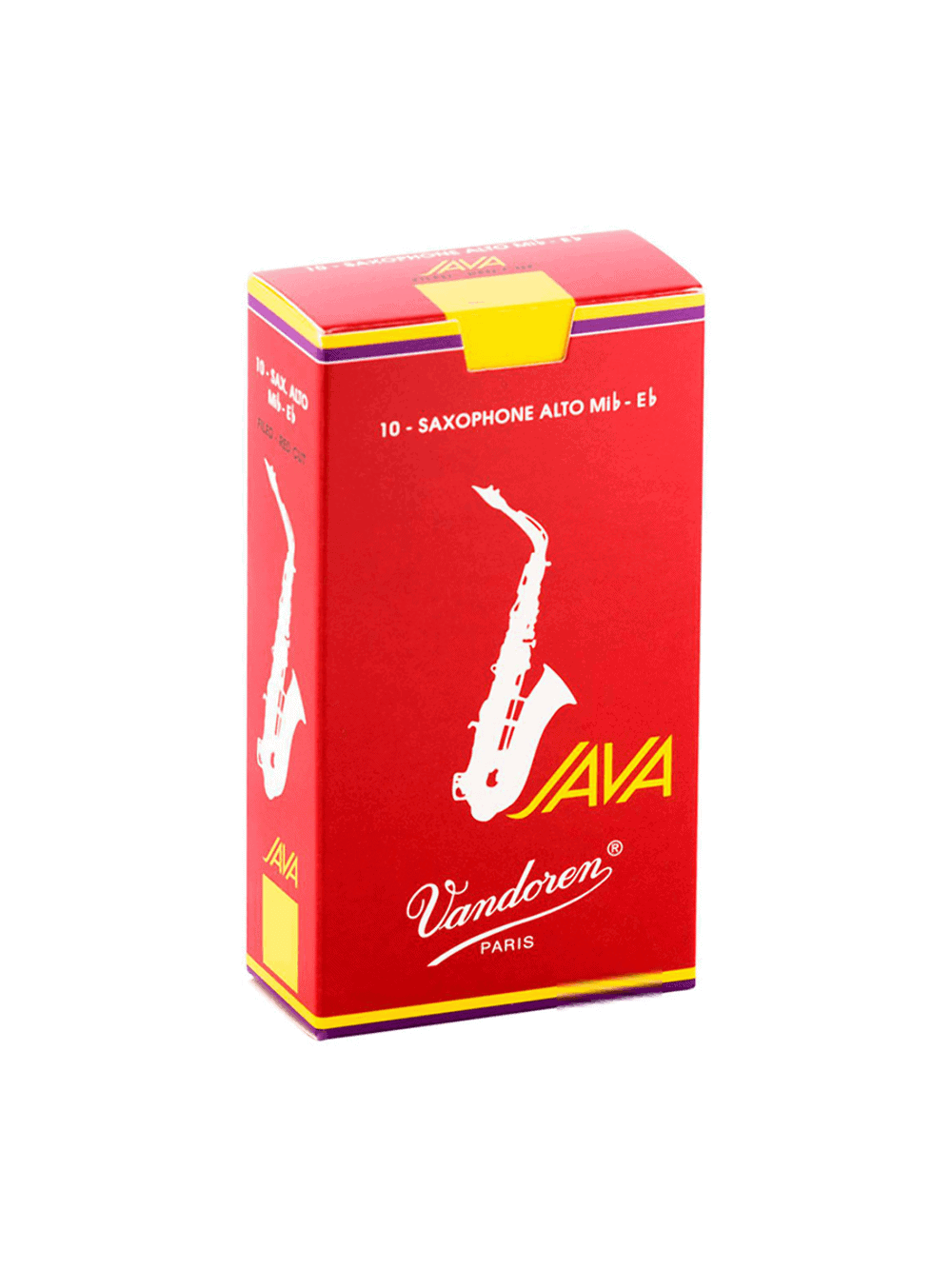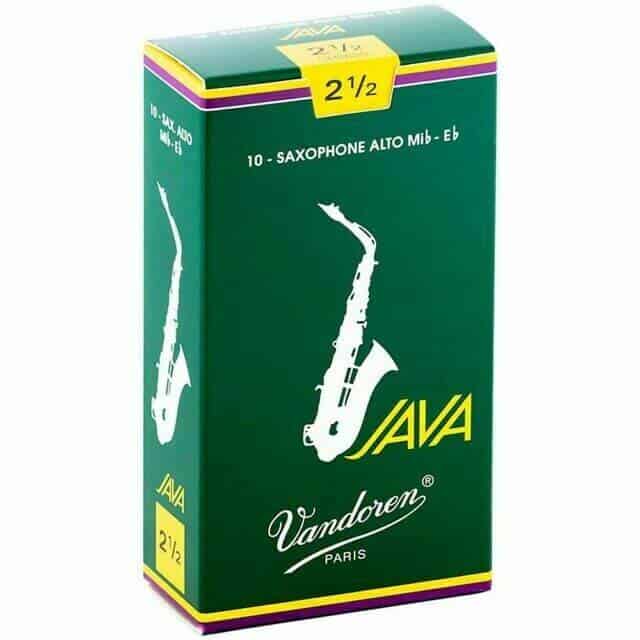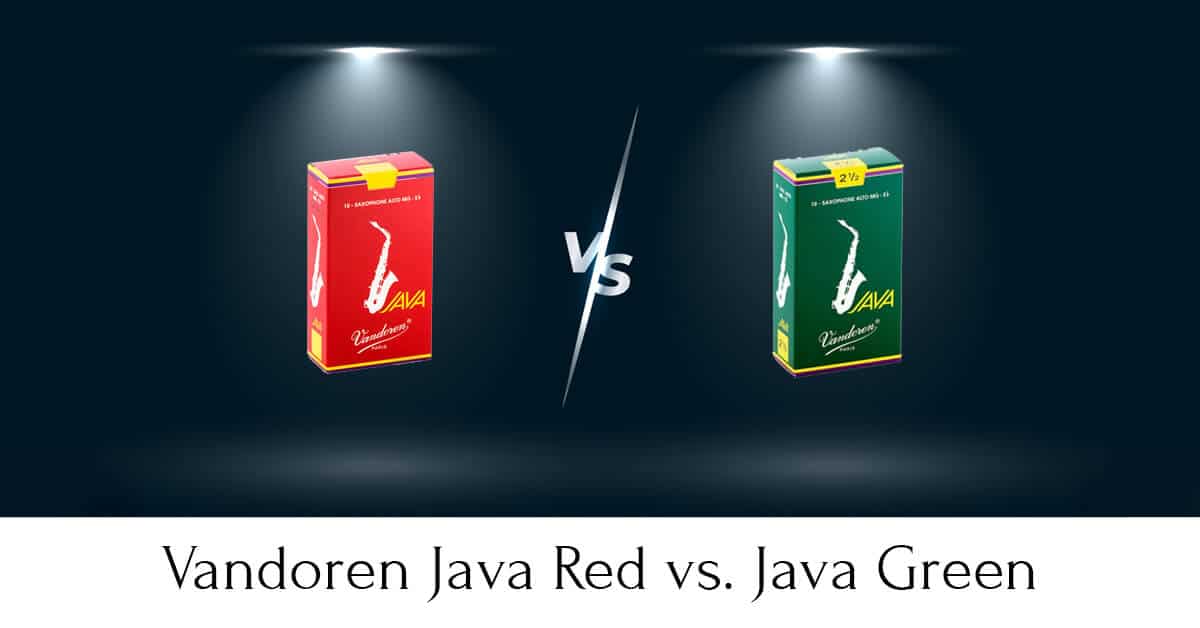Both the Java Red and Java Green reeds are jazz ones, which means they’re similar in that they have thicker tips and hearts than other types. If you’re looking for more projection and edge as well as more accentuated upper tones, either of them would serve you well.
Does that mean that there’s no difference? In this article, we’ll delve into the small distinctions that split between the Vandoren Java Red vs. Green jazz reeds.
Table of Contents
Vandoren Java Red vs. Green: Short Answer
The Java Red’s edge is more than that of the Green’s. The Red plays a bit harder than the Green, given that its body is more stable, despite the flexibility. On the other hand, the Green reeds give you a brighter jazz sound coupled with amazing projection and high flexibility.
So, if your jazz sounds tend to be on the brighter end of tones, the Java Green is the one for you.
| Image | Product | Details | Price |
|---|---|---|---|
 |
Vandoren Java Red | For Better Response & Flexibilty | Check Price |
 |
Vandoren Java Green | For a Brighter Jazz Sound | Check Price |
In-depth Comparison
Types of Saxophones
Both the Java Green and Java Red are available for soprano, alto, tenor, and baritone sax sizes, so whichever sax you feel most comfortable with, either will go just fine with it. Well, as long as it’s not a sopranino or a bass.
Strengths
Both reeds come with a similar distribution for reed strengths across corresponding sax sizes, and they’re divided as follows:
- The soprano ones are available with strength from 2 to 4 with 0.5 increments
- The alto ones from 1 to 4 with 0.5 increments
- The tenor ones from 1 to 5 with 0.5 increments, except from 4 to 5, excluding a 4.5 strength
- The baritone ones from 2 to 3.5
Bear in mind, however, that both the Java Red and Java Green reeds are designed to be jazz reeds, which means that their strengths are half a step lower than those of classical reeds.
Sound and Performance
It’s important to note that jazz reeds, by and large, have thinner hearts and thicker tips. So, from this basis, thickness and thinness are relative to the standard of jazz reeds.
Now that we’ve got that out of the way, the Java Green reeds give you brighter sounds. In fact, it’s one of the brightest jazz reeds out there, combining solid projection with flexibility. This is good news for saxophonists that prefer smaller instruments, as if you’re looking for the top alto sax reeds or best soprano ones, you’ll love what Java Greens have to offer.
However, if you’re more about slightly more somber and deeper tones, you might want to opt for the Java Red for its thicker heart and steeper slope from the heart to the rails. Java Red reeds give you more stability than Java Green ones, especially that they play a little harder, which is why beginners may not be very fond of them compared to their Green counterparts.
It’s worth mentioning that the Java Green reeds are unfiled while the Red ones are filed, which means that the Reds offer more response and flexibility. This also means that they give you a jazzy sound without the buzzing associated with the Greens.
FAQs
What’s the Difference Between Jazz and Classical Reeds?
Jazz reeds are designed to give you more projection, focusing on the upper tones of the register. It’s worth mentioning that jazz reeds are softer than classical ones by half a strength, so keep that in mind when you’re shopping for a jazz reed.
Are Vandoren Java Red and Green Reeds Synthetic?
Vandoren states that their reeds are made of 100% natural cane, which is why some people complain about inconsistencies sometimes.
Still, browsing through various cane reeds until you find the one that feels soft enough and plays with enough projection for you is the ultimate find. So, if you have the patience to do so, you’ll enjoy some of the best saxophone-playing sessions.
Conclusion
With no difference in sizes, materials, or prices, the variance is quite slight between the Java Red vs. Java Green reeds. If you’re looking for more brightness and projection, the Green would be a better option, while the Red is superior when you’re looking for response and flexibility.

